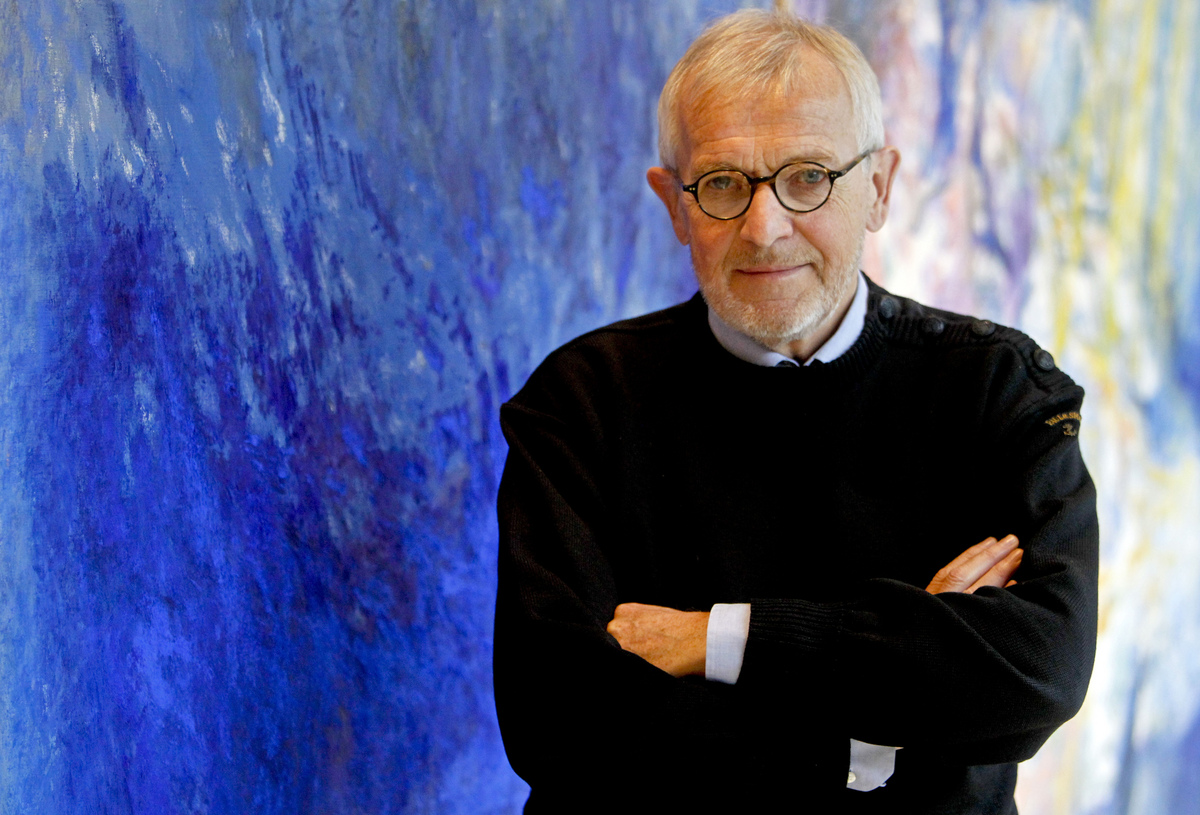Balzan Prize goes to UW neutrino pioneer

Francis Halzen’s Balzan Prize amounts to about $775,000, half of which must be used to finance future research projects. He was recognized “for his unparalleled accomplishments, which have led to the construction of the large IceCube Neutrino Observatory.”
Photo: El País/Bernardo Perez
Francis Halzen, the University of Wisconsin–Madison physicist and leader of the giant neutrino telescope known as IceCube, has been named winner of a 2015 Balzan Prize.
The Balzan Prizes are awarded annually to four scientists, scholars or artists who have distinguished themselves through contributions to four fields chosen more than a year in advance.
Halzen’s prize comes in Astroparticle Physics, Including Neutrino and Gamma Ray Observation, “for his unparalleled accomplishments, which have led to the construction of the large IceCube Neutrino Observatory in the south polar ice, a facility that has opened up a new window into the universe through the study of cosmological high-energy neutrinos,” according to Halzen’s prize citation delivered in Milan, Italy by Luciano Maiani, an Italian theoretical physicist and former director of the European Organization for Nuclear Research, known as CERN.
300 physicists and engineers from around the world operate the giant IceCube neutrino detector and analyze data from more than 5,000 sensors frozen in the Antarctic ice.
“I am grateful to the Balzan Prize Foundation and selection committee,” Halzen says. “The Balzan Prize is a great honor, and having been nominated by my colleagues here and friends around the world means as much to me as the prize.”
Halzen will receive his prize in a ceremony to be held Nov. 13 in Bern, Switzerland. The amount of each prize is 750,000 Swiss Francs (about 775,000 U.S. dollars). Half the prize must be used to finance future research projects, though Halzen says, “I am going to buy a new racing bike. That is as far as I have thought about it.”
It was an idea for an outsized experiment that carried the unassuming Halzen.
Some 30 years ago, Halzen — who arrived in Madison in 1971 on what he expected to be a six-month stay as a visiting scientist — was thinking up his first published work on neutrinos. The subatomic particles have no electrical charge or appreciable mass, but they sparked the idea that would carry him to the rarified territory of Balzan Prizes.
“From my first paper on the subject in 1987 we knew exactly what we wanted to build,” Halzen says.
That would be IceCube, a telescope like no other. Today, a collaboration of 300 physicists and engineers from around the world operate the giant neutrino detector and analyze data from more than 5,000 sensors frozen in a cubic kilometer of Antarctic ice.
“IceCube was built as a discovery instrument and what we want is surprises.”
Francis Halzen
The sensors sit in the dark, waiting for a flash of faint blue light that marks particles thrown off by the collision of a neutrino and the nucleus of a hydrogen or oxygen atom. Following the cascade of particles gives researchers clues as to how much energy the neutrino was carrying and the direction in which it was traveling.
In 2013, the IceCube observatory collaborative reported its first set of high-energy neutrinos believed to have been sent streaking through our planet by some of the most powerful events in the universe — gamma ray bursts, black holes or star formation.
Repeated analysis of IceCube data confirms that the researchers are indeed capturing stuff thrown off by cosmic events outside even our own Milky Way galaxy, winning IceCube acclaim for opening a new field of astronomy.
“If I could tell you now what we are going to learn, the results would be very disappointing,” Halzen says. “IceCube was built as a discovery instrument and what we want is surprises. For now, we are happy to have a neutrino beam from the cosmos that makes the astronomy — and physics — possible.”
Tags: faculty awards, IceCube, physics, space & astronomy




